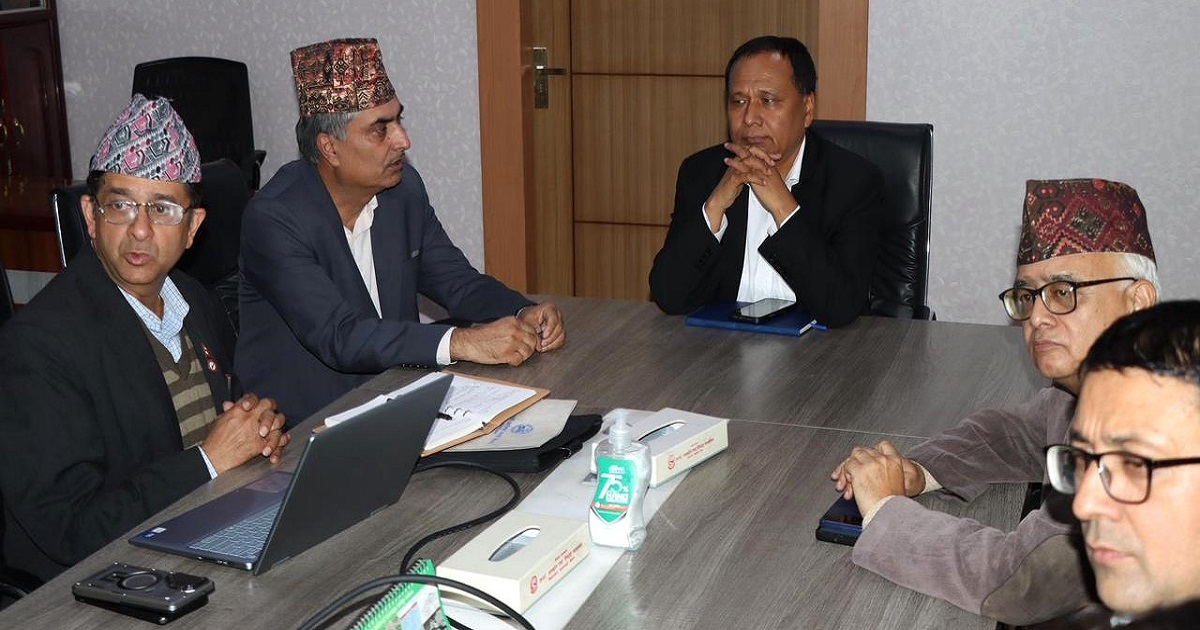Kathmandu: Minister for Energy, Water Resources and Irrigation Kulman Ghising has stated that the investment framework (modality) for the national pride 1,200 MW Budhi Gandaki reservoir hydropower project must be finalized immediately.
In a discussion with Energy, Water Resources and Irrigation Ministry Secretary Chiranjivi Chataut and officials of the promoter Budhi Gandaki Company Limited on the project’s progress, he emphasized that the project cannot be left in limbo and called for an immediate decision on the investment modality.
Minister Ghising urged the company management to promptly prepare and submit the investment modality through a financial analysis of the project.
“With exemptions on expenditures incurred so far for land acquisition, compensation for forest land use and trees to be felled, customs duties, and value-added tax increases, the project could become viable for investment. If half of the infrastructure tax currently levied on petroleum fuel imports is directly deposited into the project’s account, there will be no issues with funding,” he said. “This accumulated amount can be utilized as needed, and funds can also be raised for the project by issuing ordinary shares to the general public through Nepal Electricity Authority.”
He added, “Prepare the investment modality with 50 percent equity and 50 percent debt, ensuring no burden on the Government of Nepal, and submit it immediately.”
According to a report prepared by consultants in 2015, the project’s estimated cost was US$ 2.59 billion.
The revised estimated cost in current prices stands at US$ 2.77 billion (approximately Rs 3.32 trillion). The construction period for the project is eight years.
The company has prepared two modalities for investment: one assuming the government provides viability gap funding (VGF) and another if it does not. In the first option, without VGF from the government, the equity-debt ratio would be 25 percent and 75 percent, respectively.
For this, it proposes including government expenditures on land acquisition and related works as equity, with additional concessional loans required as investment.
In the second option, with VGF provided, the equity-debt ratio would be 30 percent and 70 percent, respectively. It proposes that the government provide 73 billion rupees as highly concessional loans to cover expenditures for land acquisition, restoration of public infrastructure, environmental protection, and forest area usage.
The equity portion is proposed to be raised from the government, Nepal Electricity Authority, Employees Provident Fund, Citizen Investment Trust, Nepal Telecom, and the general public.
The detailed project report and tender documents for the project are in the preparation stage. Progress on land acquisition—the most complex aspect of the project—stands at about 90 percent.
Landowners have received Rs 42.65 billion in compensation for land, structures, plants, and fruit-bearing trees. The project will impact 8,117 households in Gorkha and Dhading districts both physically and economically, with 3,560 households facing complete displacement.
Given its proximity to load centres such as Kathmandu, Chitwan, and Pokhara, the Budhi Gandaki project holds strategic importance for energy security. A 263-metre-high curved arch dam will be constructed to impound the Budhi Gandaki River, which flows along the border of Gorkha and Dhading districts.
This will affect 14 former Village Development Committees (now 4 rural municipalities and 1 municipality) in Dhading and 13 in Gorkha (now 4 rural municipalities).
Once the dam is built, the reservoir will span 63 square kilometres in the upstream riparian area. The 63 square kilometres reservoir created by Budhi Gandaki will enable benefits such as employment, business, tourism hubs, and fish farming.
The maximum water level of the project will be 540 metres. The project will generate more than three billion units of electricity annually.



Comment Here